Having lived with my Hartley greenhouse through two winters in Southern Ontario I’ve gained a little experience with how my electric heaters work in extreme cold. Two 17,000 BTU electric fan heaters set at 15C can keep the greenhouse at 10C inside when the temperature drops to -6C. Once we reach -12C the greenhouse temperature falls to around 5C. In extremely cold weather conditions of -20C, the heaters can’t keep the greenhouse above freezing. More concerning, if both heaters run simultaneously for too long I blow the electric breakers in the house. Not a good thing if it happens at 2 in the morning.
So I needed a second option and I chose to install in-floor radiant heat in the greenhouse. Luckily I had a small window in the spring of 2023 to dig and install any lines before the hardscaping around the greenhouse was completed during the summer months.
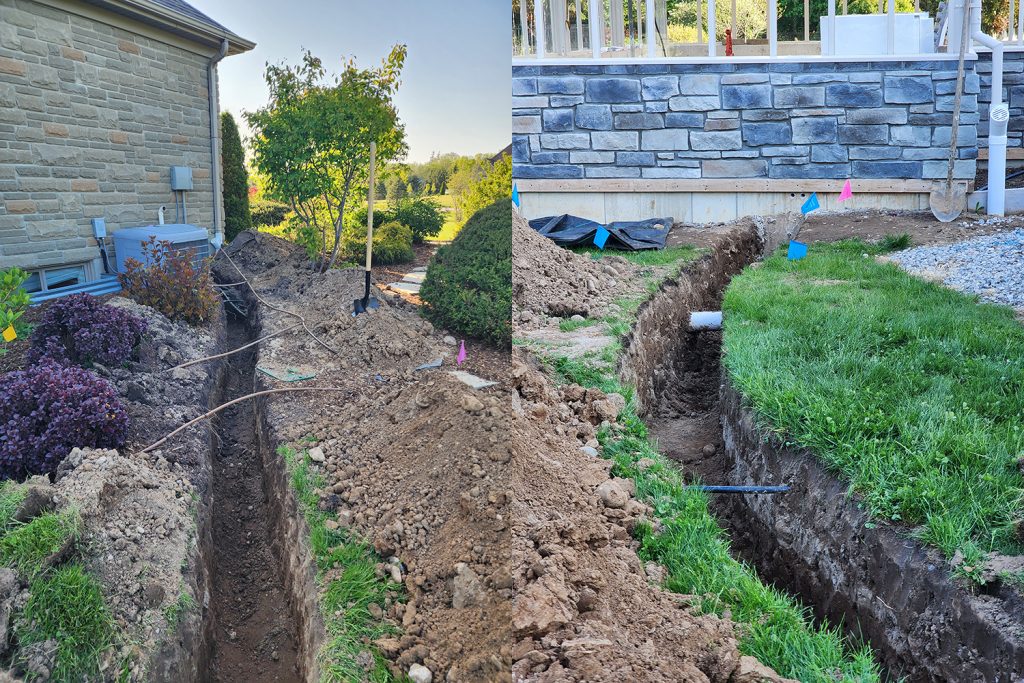
We had to hand dig the trench from the house to the greenhouse for the water pipes given all the other infrastructure already underground.
My system uses a Navien NHB-110, overkill I think for the greenhouse but if we ever decide to add heating cables to the driveway we’re ready. The setup is beyond me – what I do know is there is glycol in the lines to prevent freezing and I do need to monitor the glycol tank although it hasn’t changed volume yet in 6 months.
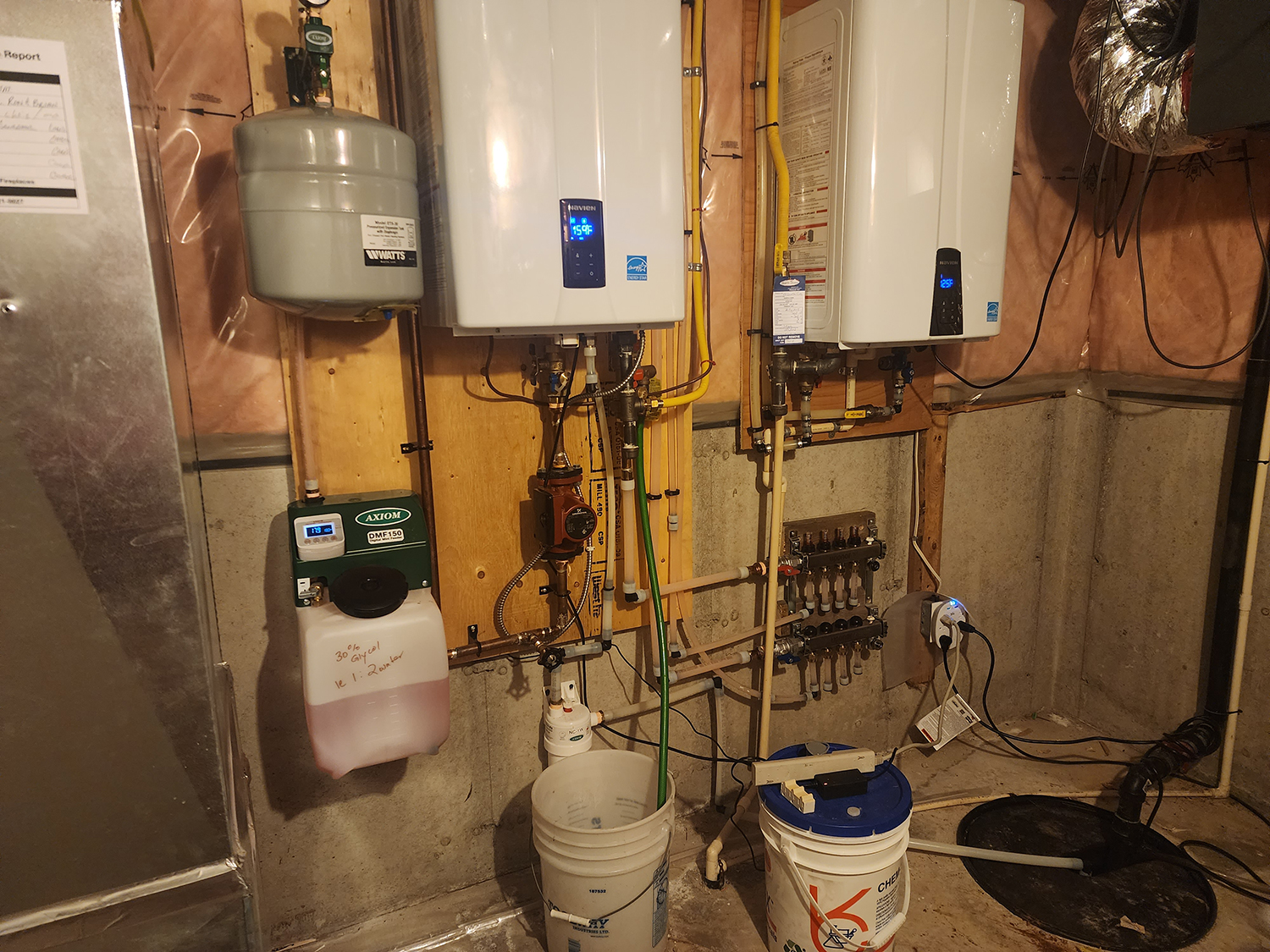
The Navien boiler setup in our house. It has a manifold that will allow us to have other zones like driveway snow melting, if and when we ever need it.
Water lines run inside a foam barrier. This barrier alone should help with some heat loss or cold transfer from the ground in the winter, as will the concrete floor.
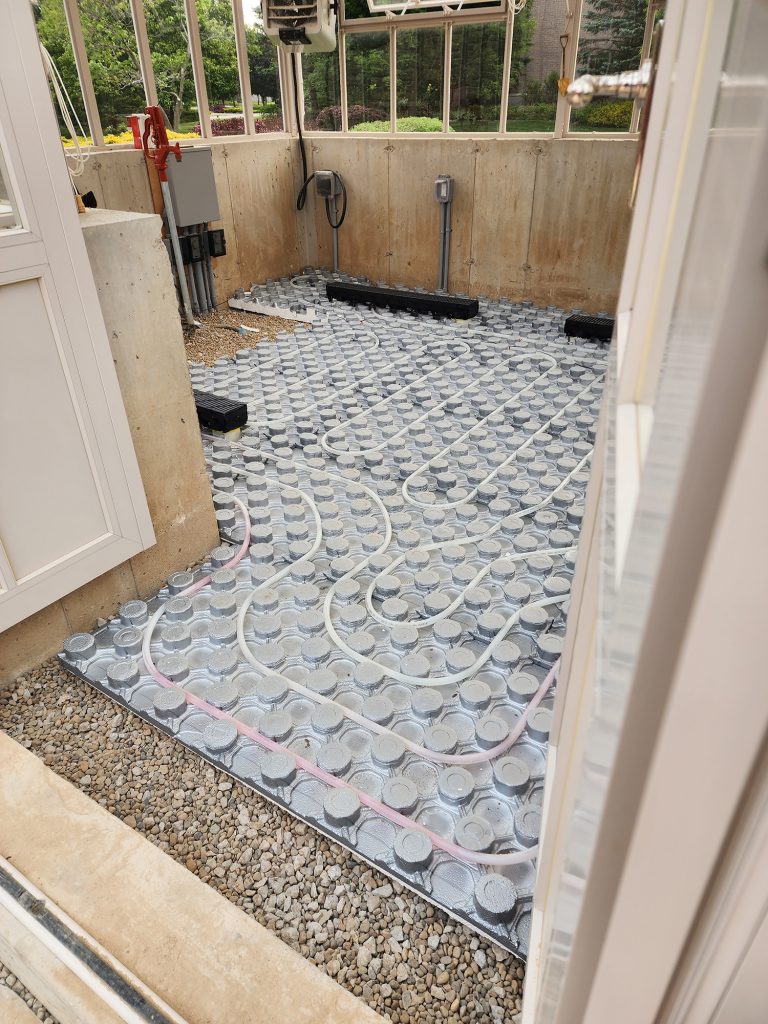
Foam board panels were laid over 10 inches of pre-existing gravel with holes cut for water drains.
I asked the installers not to pour concrete in an area around my frost-free tap to avoid having to break up a concrete floor if we ever need to replace or repair the tap. Concrete was poured over the tubing with drainage for water. Below all this is still roughly 10 inches of gravel which will manage any water through the drains.

The concrete floor slopes to ensure water flows to the drains which were set at the inside front edge of my staging or tables.
So how has it worked? It’s early yet (we’ve only had nights down to -5C) but the floor does heat up. This provides both radiant heat and I think works like a heat sink at night. How well it works depends on what you are looking for.
First, the greenhouse floor is definitely much warmer than table height when the temperature drops, by several degrees. The floor will register 33C while the air around where the plants are will drop rapidly as the sun sets to below where I’d like it to hold. I’m still having to rely on the electric fan heaters to hold the ambient air temperature at 15C when the temperatures fall below 5C. A lot of commercial greenhouses with radiant floor heating grow on the ground rather than with tables. While that’s an option when we have extreme cold periods, I’m not keen to do that regularly as I’m too old to keep doing that much bending.
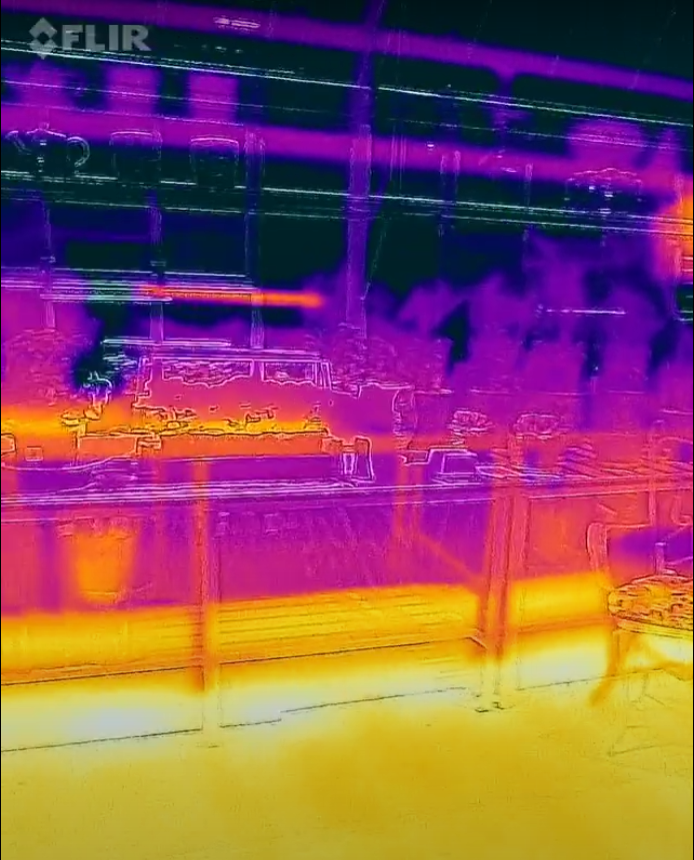
This is a FLIR heat map of the greenhouse at night. You can really see how hot the floor is relative to the cooler temperature of the plants. The yellow on the table is the heat mat below my micro tomatoes.
The other issue with radiant floor heating is that it cannot ramp up fast enough. While the system runs a little harder in the evening as the temperatures drops, the overall floor temperature and greenhouse cool during this shoulder part of the day since the floor can’t heat up as fast as the heat loss through the windows. My plan is to set the electric heaters to 15C and let them kick on when needed.
We are still playing with the settings to get the most out of the radiant flooring. I’m not convinced it’s running optimally for a greenhouse even with the fixed limitations noted above. I ran some tests by taking a video of the boiler while operating then watched the video at 1.5 times speed while recording its supply temperature every 10 seconds. You can see that the system runs a little longer ON as the ambient air cools, but it still cycles off for exactly 3 minutes once the supply temperature peaks. I have no idea if this is normal and will continue to work with the installers to get more heat out of the system on demand.
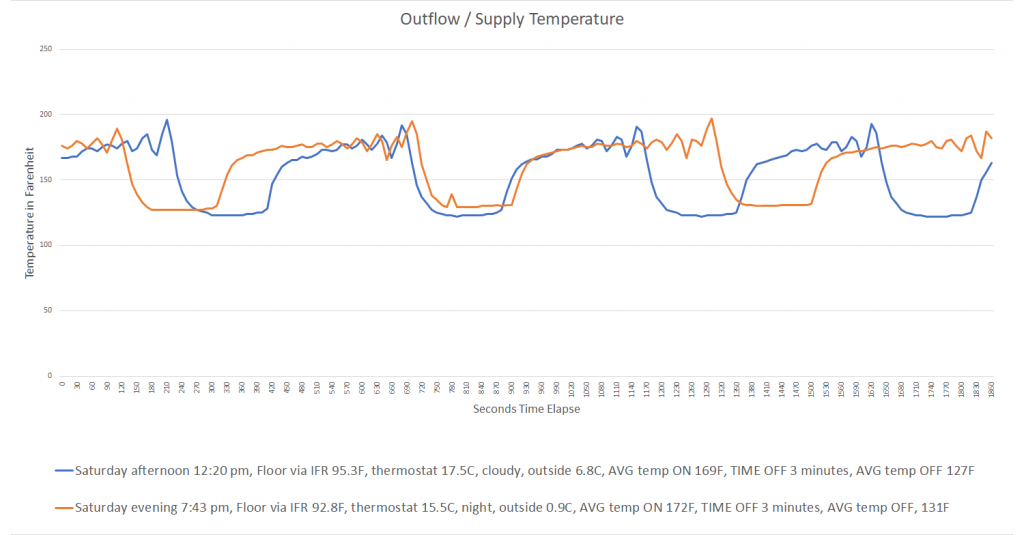
Temperature range of boiler supply comparing afternoon with evening.
Next, I’m going to try a fan at floor level to see if I can get more of the ground heat to move up to mid-level. I have a big fan on top of the tables and this fan is set to run when the greenhouse warms up past 24C. Running this fan at night is not a good option based on my experience last winter. I found that running a fan next to a super cold window in winter didn’t simply circulate the heated air, it cooled the greenhouse down faster. So my plan is to get a smaller fan and set it in the bottom of the table at the south end, just above the radiant-heated floor and try to push some hot air up. This fan will be set opposite to what you would normally do for a greenhouse fan. I’ll have it come on automatically when the ambient air at mid-height falls below 18C.
At the end of the day, I’m still happy to have the radiant heat. The greenhouse is warmer and the electric heaters are not running as much. This saves me money and gives me peace of mind that I won’t be blowing breakers regularly. And as I said, during extreme cold nights I can always move the plants to the floor for safety rather than bringing them in the house which is what I had to do last winter.
I also love having the concrete floor over gravel. It’s much more comfortable to work on and my tables are all now nicely level.
I’ll admit that this might be a little over the top for a personal greenhouse. Having said that, this is my retirement cottage, vacation spot, and happy place. I spend a lot of time here, especially during the winter when I can’t garden, so it’s worth the investment that I know I’m privileged to be able to afford.
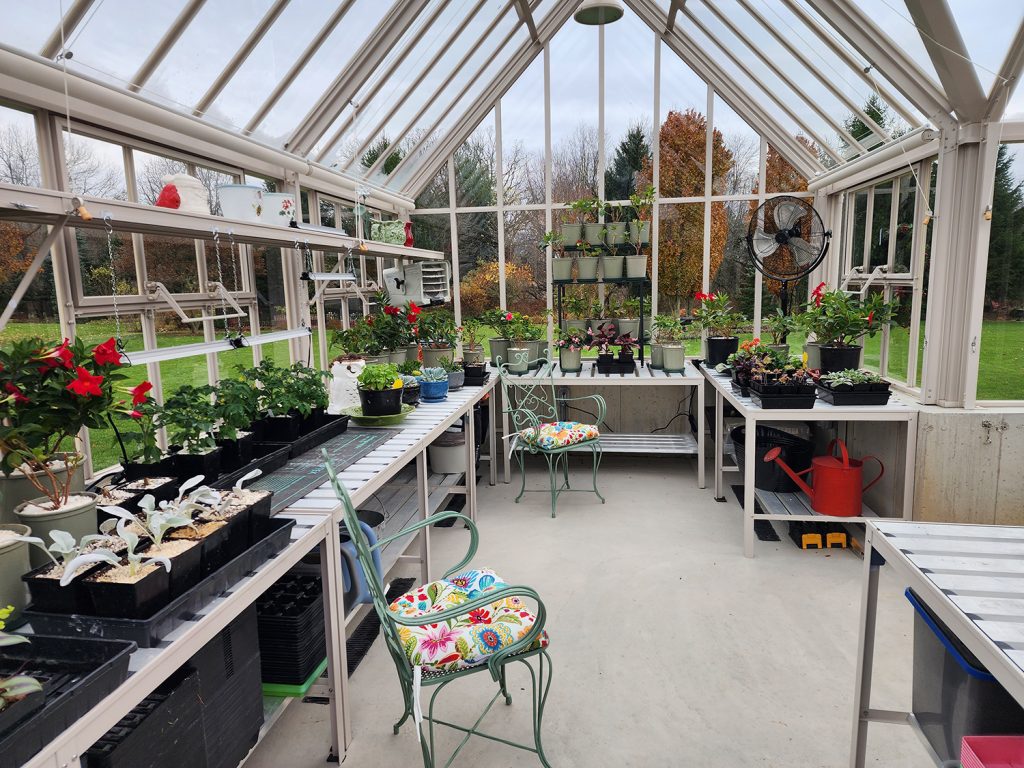
The greenhouse is getting full. Here it is in November 2023.